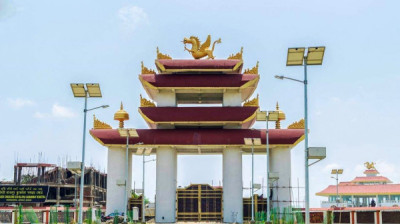Why Jorhat In Assam Is Emerging As India’s No.1 Travel Destination For 2026?



From Tea Gardens to Global Trend Charts: Jorhat Tops Skyscanner’s Travel Trends Report 2026
This extraordinary rise marks a significant shift in how Indian travelers are choosing their next destination — prioritizing authentic experiences, cultural depth, and peaceful environments over commercial tourism hubs.
Let’s explore why Jorhat has suddenly taken the spotlight and how it represents the evolving face of India’s travel trends.
For decades, Jorhat has quietly been known as the “Tea Capital of Assam,” a region famed for its sprawling tea estates that produce some of the finest Assam tea in the world. But in 2025, the rest of India — and the world — began to take notice.
According to the Skyscanner Travel Trends Report, flight searches for Jorhat between January and June 2025 saw an astonishing 493% growth compared to the same period in 2024. This growth surpassed that of popular global destinations, signaling Jorhat’s newfound appeal among modern travelers seeking offbeat, meaningful journeys.
Jorhat stands at the crossroads of natural beauty and cultural heritage. Its charm lies in its simplicity — endless tea gardens, misty mornings, traditional satras (monastic centers), and warm Assamese hospitality.
Here are a few key reasons behind its meteoric rise:
The Skyscanner report notes a major shift in traveler behavior: Indians now prefer authenticity over luxury. Rather than visiting over-touristed destinations, people are drawn to genuine local interactions and slower, experience-driven travel.
Jorhat fits this trend seamlessly. Unlike crowded metros or beach resorts, it offers peaceful escapes amid nature, eco-friendly homestays, and close-knit community experiences.
Visitors can stay in tea estate bungalows, enjoy local cuisines, witness traditional performances, and even engage with farmers — creating memories rooted in connection and culture rather than consumption.
One of the standout findings in Skyscanner’s 2026 report is that 82% of Indian travelers are now motivated by “destination check-ins” — choosing their travel spot based on unique stays rather than landmarks.
Jorhat, with its rising eco-tourism, heritage bungalows, and riverside retreats, fits perfectly into this growing trend. Instead of high-end hotels, travelers can enjoy authentic Assamese hospitality in homestays and tea garden cottages that offer both comfort and culture.
This evolution in travel behavior has directly contributed to Jorhat’s visibility online and on social media, further boosting its popularity.
Another key factor driving Jorhat’s emergence is the influence of social media content. Travel bloggers and local creators have begun showcasing Assam’s unexplored beauty through short-form videos, vlogs, and reels, inspiring curiosity among domestic travelers.
Modern travelers are increasingly value-conscious — they seek destinations that balance affordability with experience. Jorhat offers exactly that.
The combination of value-for-money and cultural richness has made Jorhat one of the most searched travel destinations among young Indians in 2025–2026.
Jorhat’s rise is not just about one city — it represents a larger revival of Assam’s tourism identity. For years, Assam has remained one of India’s most underrated destinations despite its national parks, tribal heritage, and tea culture.
Now, with global recognition from Skyscanner, Jorhat’s success may inspire greater focus on Northeast India’s sustainable tourism. The region’s biodiversity, community-led tourism, and artistic traditions are slowly gaining the global spotlight they deserve.
With responsible tourism practices, Jorhat could well become the face of Northeast India’s travel revolution — blending tradition, tranquility, and transformation.
Q1. Why is Jorhat famous?
Jorhat is famous for its tea gardens, cultural heritage, and as the gateway to Majuli, the world’s largest river island.
Q2. What makes Jorhat a top travel destination for 2026?
A 493% surge in travel searches and its unique mix of culture, nature, and authenticity have made Jorhat India’s top trending travel destination.
Q3. When is the best time to visit Jorhat?
October to March offers pleasant weather, ideal for exploring tea estates, Majuli Island, and cultural festivals.